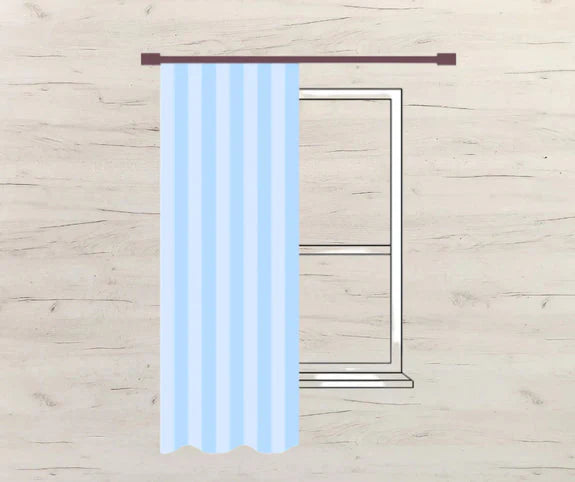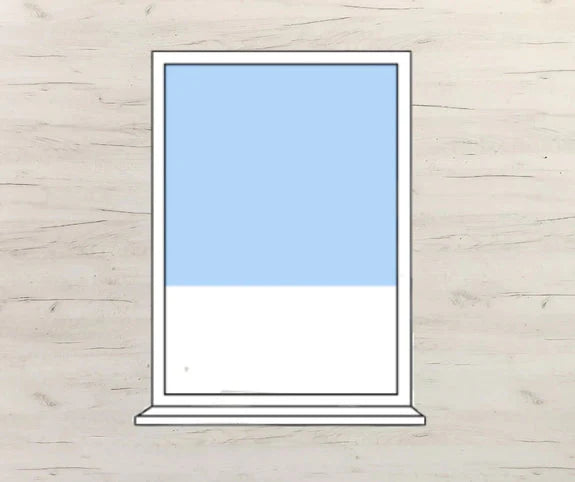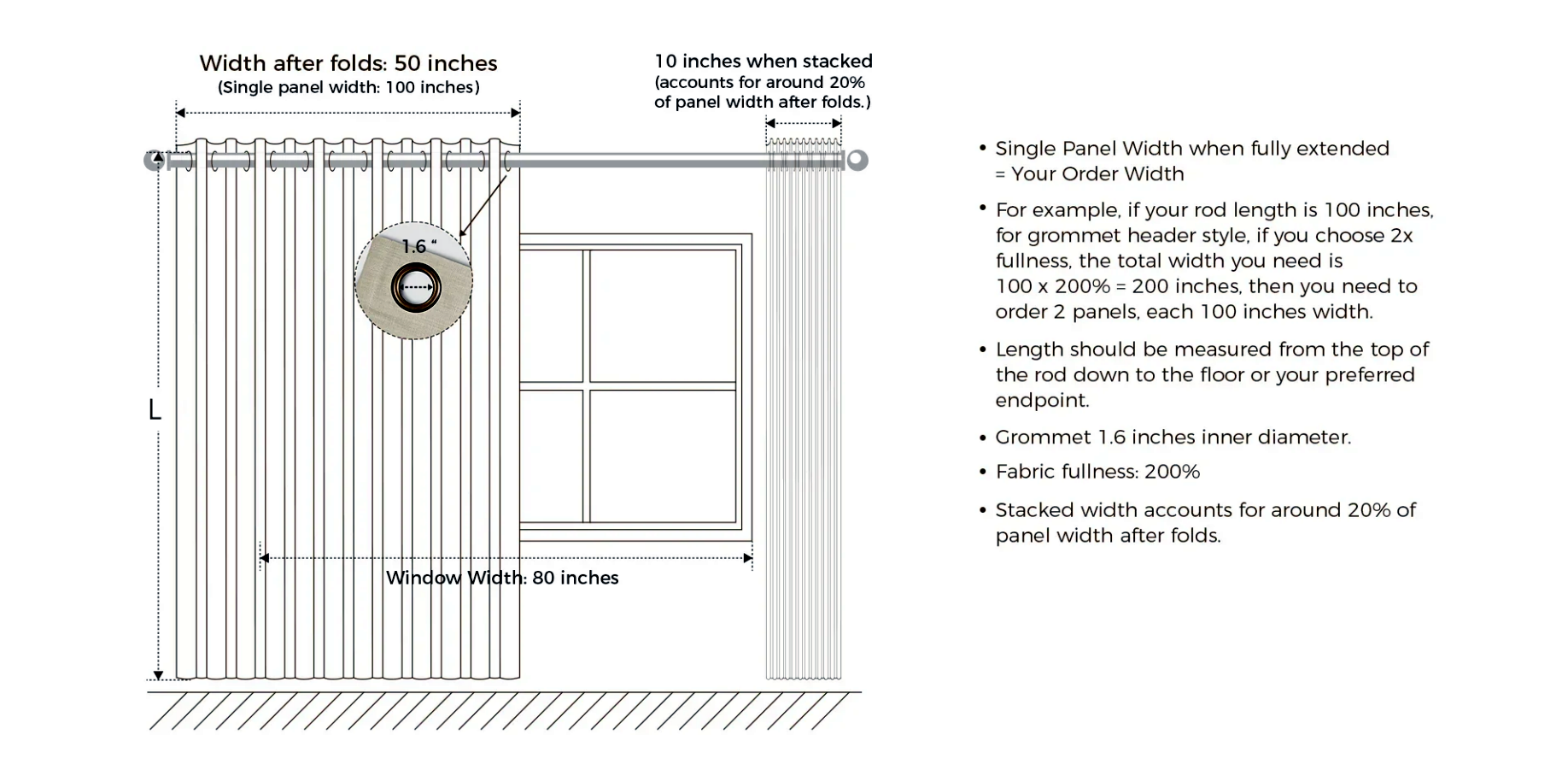Measurement Finder
Not sure how to figure out the curtains' sizes? Choose the curtain type, and follow our guide to answer a few questions. We will figure out the suitable size for you.
Drapery Measuring Instruction
Simplify your curtain measuring process with our Measurement Finder, designed to guide you effortlessly through each step for a smooth, hassle-free experience. For a more in-depth, professional measurement, we’ve also prepared a detailed guide for you below.
-

Step 1: Measure the Curtain Rod Width and Placement
If you have installed a curtain rod, measure the length of the rod.
If a curtain rod is not installed, first check where the curtain rod will be installed above and to the sides of the window frame. Consider how high you want the rod to be to create the desired visual effect.
-

Step 2: Know EASEEASE Standard Fullness
To prevent your drapes from looking flat like a stretched sheet, it’s important to consider adding fullness for extra width. We use 200-250% fabric fullness to create the pleats, ensuring the curtains have a rich and luxurious appearance.
- 2x Fullness for pinch pleat
- 2.3x - 2.5x Fullness for triple pleat
You don’t need to add extra width for fullness, just choose the width you want.
For Pleat Heading Style
For Soft Top Heading Style
For Grommet Heading Style
For Ripple Fold Drapery
Finding The Perfect Fit
Shades Measuring Instruction
Before you focus on how to measure windows for blinds or shades, you must decide which type of mounting is right for you.
-

Inside Mount Your Window Treatments When:
- Enough window depth for inside mount.
- To get a sleek and minimalist aesthetic for your space.
- The window trim is visually appealing and should be highlighted rather than concealed.
- You prefer window treatments that blend seamlessly with the wall without protruding.
- The windows have sturdy frames capable of supporting the mounting hardware.
- The house is relatively new, with well-shaped rectangular windows.
- The window sill extends outward, complicating the use of an outside mount.
-

Outside Mount Your Window Treatments When:
- The window depth is not enough, also is irregularly shaped, unsuitable for an inside mount.
- The objective is to cover unattractive window trim and refresh the window’s appearance.
- Maximum light-blocking capability is required when the shades are drawn.
- The window frame is too fragile or shallow to support an inside mount.
- Privacy is a primary concern, and the shades need to block external view when closed.
- The goal is to create the impression of taller, larger windows.
- When rolled up, the window treatment should be as unobtrusive as possible.
Measure the Window for Inside Mount

- Depth: Measure inside casing depth at the top for inside or flush mount suitability. Depth needs vary by shade.
- Width: Measure top, middle, and bottom; round down to the nearest 1/8 inch.
- Length: Measure left, center, and right; round up to the nearest 1/8 inch, using the largest measurement.
Note on Deduction
Measure the Window for Outside Mount

- Check Space: Measure the height above the window to ensure enough room for secure headrail and bracket installation.
- Width: Measure the window's outer frame width. Add 2-4 inches total to reduce light gaps if space allows—this is your ordering width.
- Length: Measure the window's outer frame height. Mount 10-12 inches above the frame, if possible, to account for stack height and maximize exposure.














